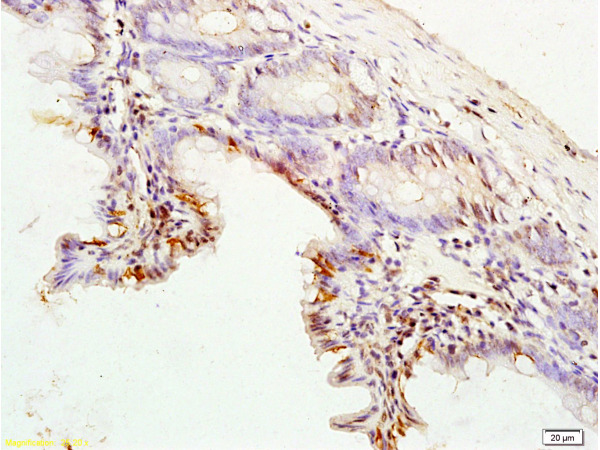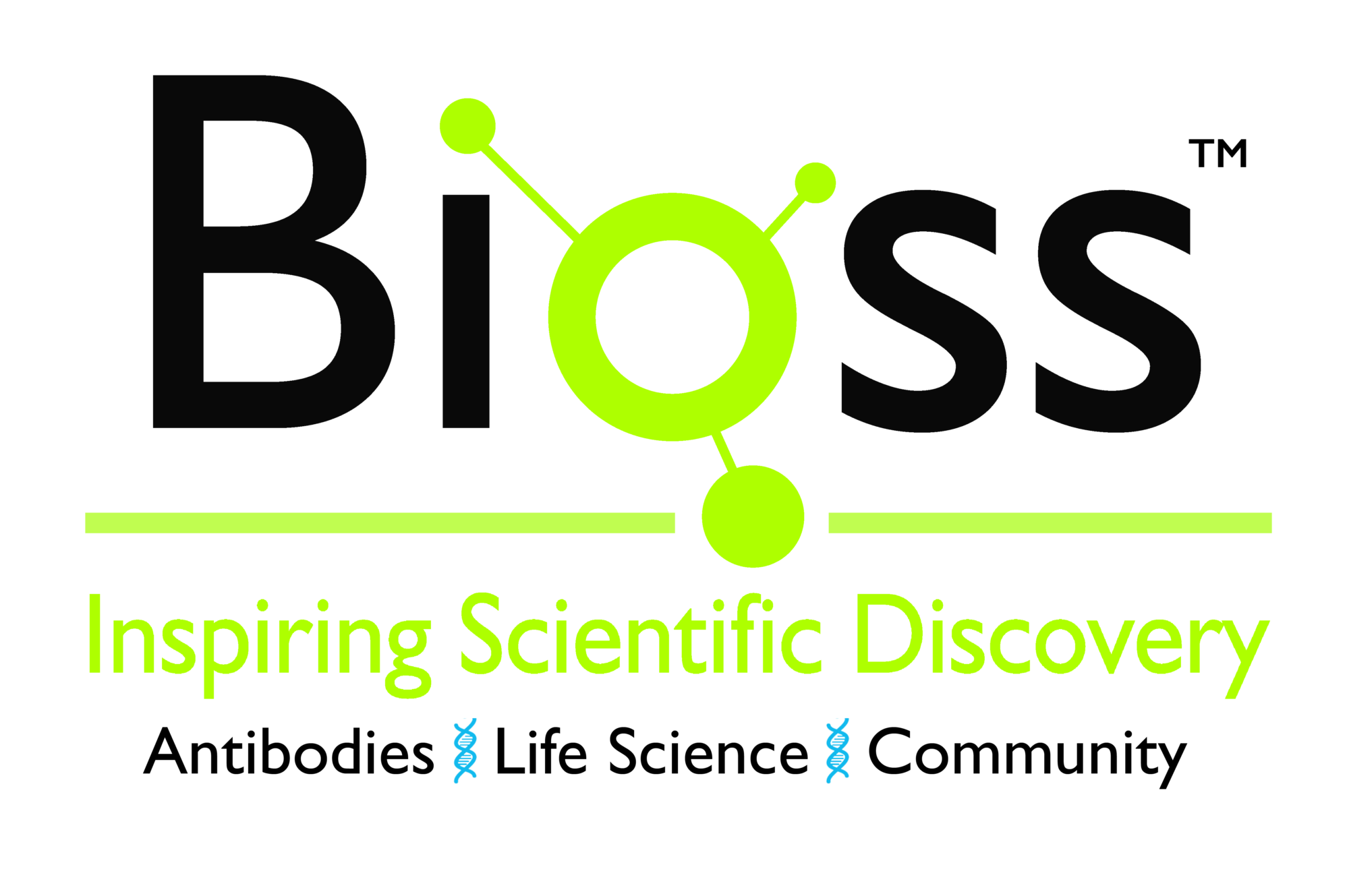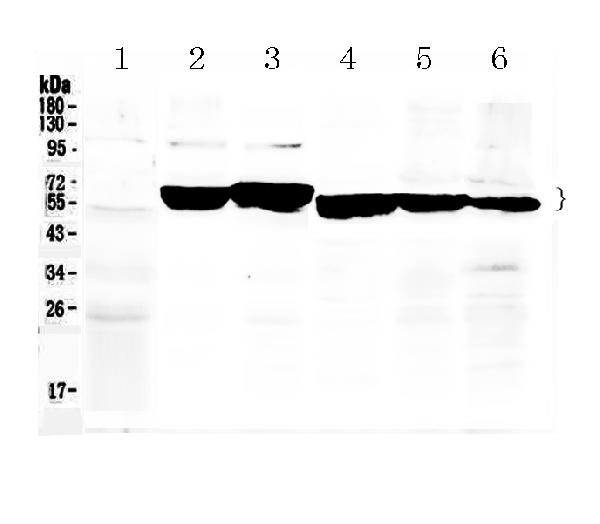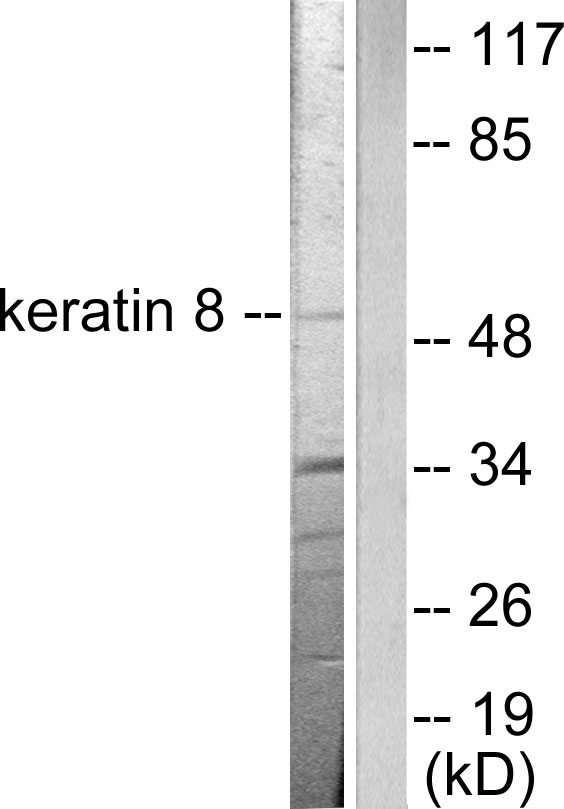![Cytokeratin 8(K8.8), Biotin conjugate, 0.1mg/mL [26628-22-8] Cytokeratin 8(K8.8), Biotin conjugate, 0.1mg/mL [26628-22-8]](https://biotium.com/wp-content/uploads/2016/12/BNUB0689-0-1.jpg)
Cytokeratin 8(K8.8), Biotin conjugate, 0.1mg/mL [26628-22-8]
BNCB0689
ApplicationsFlow Cytometry, ImmunoFluorescence, Western Blot, ImmunoHistoChemistry, ImmunoHistoChemistry Paraffin
Product group Antibodies
TargetKRT8
Overview
- SupplierBiotium
- Product NameCytokeratin 8(K8.8), Biotin conjugate, 0.1mg/mL
- Delivery Days Customer9
- ApplicationsFlow Cytometry, ImmunoFluorescence, Western Blot, ImmunoHistoChemistry, ImmunoHistoChemistry Paraffin
- CertificationResearch Use Only
- ClonalityMonoclonal
- Clone IDK8.8
- Concentration0.1 mg/ml
- ConjugateBiotin
- Gene ID3856
- Target nameKRT8
- Target descriptionkeratin 8
- Target synonymsCARD2; CK8; CK-8; CYK8; cytokeratin-8; K2C8; K8; keratin 8, type II; keratin, type II cytoskeletal 8; KO; type-II keratin Kb8
- HostMouse
- IsotypeIgG1
- Protein IDP05787
- Protein NameKeratin, type II cytoskeletal 8
- Scientific DescriptionCytokeratin 8 (CK8) belongs to the type II (or B or basic) subfamily of high molecular weight cytokeratins, and exists in combination with cytokeratin 18 (CK18). CK8 is primarily found in the non-squamous epithelia and is present in majority of adenocarcinomas and ductal carcinomas. It is absent in squamous cell carcinomas. Hepatocellular carcinomas are defined by the use of antibodies that recognize only cytokeratin 8 and 18. CK8 exists on several types of normal and neoplastic epithelia, including many ductal and glandular epithelia such as colon, stomach, small intestine, trachea, and esophagus as well as in transitional epithelium. Anti-CK8 does not react with skeletal muscle or nerve cells. Epithelioid sarcoma, chordoma, and adamantinoma show strong positivity corresponding to that of simple epithelia (with antibodies against CK8, CK18 and CK19). Reportedly, anti-CK8 is useful for the differentiation of lobular (ring-like, perinuclear) from ductal (peripheral-predominant) carcinoma of the breast. The epitope of this MAb is located between aa343-357 (ELAI kDaNAKLSELE). Primary antibodies are available purified, or with a selection of fluorescent CF® Dyes and other labels. CF® Dyes offer exceptional brightness and photostability. Note: Conjugates of blue fluorescent dyes like CF®405S and CF®405M are not recommended for detecting low abundance targets, because blue dyes have lower fluorescence and can give higher non-specific background than other dye colors.
- SourceAnimal
- Storage Instruction2°C to 8°C
- UNSPSC12352203






